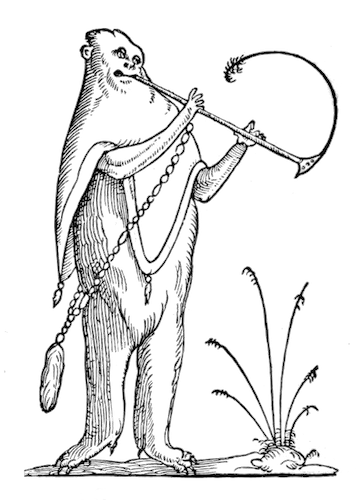
Essays

Writing his Life through the Other: The Anthropology of Malinowski
Last year saw the works of Bronislaw Malinowski - father of modern anthropology - enter the public domain in many countries around the world. Michael W. Young explores the personal crisis plaguing the Polish-born anthropologist at the end of his first major stint of ethnographic immersion in the Trobriand Islands, a period of self-doubt glimpsed through entries in his diary - the most infamous, most nakedly honest document in the annals of social anthropology. more

Inside the Empty House: Sherlock Holmes, For King and Country
As a new series of BBC’s Sherlock revives the great detective after his apparent death, Andrew Glazzard investigates the domestic and imperial subterfuge beneath the surface of Sherlock Holmes’s 1903 return to Baker Street in Conan Doyle’s ‘The Empty House’. more

Encounter at the Crossroads of Europe - the Fellowship of Zweig and Verhaeren
Stefan Zweig, whose works passed into the public domain this year in many countries around the world, was one of the most famous writers of the 1920s and 30s. Will Stone explores the importance of the Austrian's early friendship with the oft overlooked Belgian poet Emile Verhaeren. more

Time and Place: Eric Ravilious (1903-1942)
In many countries around the world the works of Eric Ravilious have come out of copyright this year – he died when his aircraft went missing off Iceland while he was making war paintings. An artist in multiple disciplines, his greater legacy dwells in water-colours. Frank Delaney re-visits the work of this understated, yet significant figure. more

Lost in Translation: Proust and Scott Moncrieff
Scott Moncrieff's English translation of Proust's A la recherche du temps perdu is widely hailed as a masterpiece in its own right. His rendering of the title as Remembrance of Things Past is not, however, considered a high point. William C. Carter explores the two men's correspondence on this somewhat sticky issue and how the Shakespearean title missed the mark regarding Proust's theory of memory. more

Elizabeth Bisland’s Race Around the World
Matthew Goodman explores the life and writings of Elizabeth Bisland, an American journalist propelled into the limelight when she set out in 1889 - head-to-head with fellow journalist Nellie Bly - on a journey to beat Phileas Fogg's fictitious 80-day circumnavigation of the globe. more

A Dangerous Man in the Pantheon
This October marks 300 years since the birth of French Enlightenment thinker Denis Diderot. Although perhaps best known for co-founding the Encylopédie, Philipp Blom argues for the importance of Diderot's philosophical writings and how they offer a pertinent alternative to the Enlightenment cult of reason spearheaded by his better remembered contemporaries Voltaire and Rousseau. more

The Serious and the Smirk: The Smile in Portraiture
Why do we so seldom see people smiling in painted portraits? Nicholas Jeeves explores the history of the smile through the ages of portraiture, from Da Vinci's Mona Lisa to Alexander Gardner's photographs of Abraham Lincoln. more

Proving it: The American Provers’ Union Documents Certain Ill Effects
What would induce physicians to ingest mercury to the point of vomiting and to painstakingly note down the effects of imbibing large amounts of cannabis tincture? Alicia Puglionesi explores the history of "proving", the practice of auto-experimentation which forms the cornerstone of homeopathic medicine. more

The Lost World of the London Coffeehouse
In contrast to today's rather mundane spawn of coffeehouse chains, the London of the 17th and 18th century was home to an eclectic and thriving coffee drinking scene. Matthew Green explores the halcyon days of the London coffeehouse, a haven for caffeine-fueled debate and innovation which helped to shape the modern world. more

Re-examining “the Elephant Man”
Nadja Durbach questions the extent to which Joseph Merrick, known as the Elephant Man, was exploited during his time in a Victorian “freakshow”, and asks if it wasn't perhaps the medical establishment, often seen as his saviour, who really took advantage of Merrick and his condition. more

Robert Baden-Powell’s Entomological Intrigues
In 1915 Robert Baden-Powell, founder of the worldwide Scouts movement, published his DIY guide to espionage, My Adventures as a Spy. Mark Kaufman explores how the book's ideas to utilise such natural objects as butterflies, moths and leaves, worked to mythologize British resourcefulness and promote a certain 'weaponization of the pastoral'. more

With his Vera Historia, the 2nd century satirist Lucian of Samosata wrote the first detailed account of a trip to the moon in the Western tradition and, some argue, also one of the earliest science fiction narratives. Aaron Parrett explores how Lucian used this lunar vantage point to take a satirical look back at the philosophers of Earth and their ideas of "truth". more

In the spring of 1920, at the beginning of a growing fascination with spiritualism brought on by the death of his son and brother in WWI, Arthur Conan Doyle took up the case of the Cottingley Fairies. Mary Losure explores how the creator of Sherlock Holmes became convinced that the 'fairy photographs' taken by two girls from Yorkshire were real. more

Mother Goose’s French Birth (1697) and British Afterlife (1729)
Christine Jones explores the early English translations of Charles Perrault's 1697 collection of fairy tales and how a change in running order was key to them becoming the stories for children which we know today. more

Athanasius Kircher and the Hieroglyphic Sphinx
More than 170 years before Jean-François Champollion had the first real success in translating Egyptian hieroglyphs, the 17th century Jesuit scholar Athanasius Kircher was convinced he had cracked it. He was very wrong. Daniel Stolzenberg looks at Kircher's Egyptian Oedipus, a book that has been called “one of the most learned monstrosities of all times.” more

As a Lute out of Tune: Robert Burton’s Melancholy
In 1621 Robert Burton first published his masterpiece The Anatomy of Melancholy, a vast feat of scholarship examining in encyclopaedic detail that most enigmatic of maladies. Noga Arikha explores the book, said to be the favorite of both Samuel Johnson and Keats, and places it within the context of the humoural theory so popular at the time. more

Vesalius and the Body Metaphor
City streets, a winepress, pulleys, spinning tops, a ray fish, curdled milk: just a few of the many images used by 16th century anatomist Andreas Vesalius to explain the workings of the human body in his seminal work De Humani Corporis Fabrica. Marri Lynn explores. more

Joseph Banks: Portraits of a Placid Elephant
Patricia Fara traces the changing iconography of Joseph Banks, the English botanist who travelled on Captain Cook's first great voyage and went on to become President of the Royal Society and important patron for a whole host of significant developments in the natural sciences. more

Mary Toft and Her Extraordinary Delivery of Rabbits
In late 1726 much of Britain was caught up in the curious case of Mary Toft, a woman from Surrey who claimed that she had given birth to a litter of rabbits. Niki Russell tells of the events of an elaborate 18th century hoax which had King George I's own court physicians fooled. more

The Redemption of Saint Anthony
Gustave Flaubert, best known for his masterpiece Madame Bovary, spent nearly thirty years working on a surreal and largely 'unreadable' retelling of the temptation of Saint Anthony. Colin Dickey explores how it was only in the dark and compelling illustrations of Odilon Redon, made years later, that Flaubert's strangest work finally came to life. more

Still Booking on De Quincey’s Mail-Coach
Robin Jarvis looks at Thomas de Quincey's essay "The English Mail-Coach, or the Glory of Motion" and how its meditation on technology and society is just as relevant today as when first published in 1849. more

The Curious World of Isaac D’Israeli
Marvin Spevack introduces the Curiosities of Literature, the epic cornucopia of essays on all things literary by Isaac D'Israeli: a scholar, man of letters and father of British Prime Minister Benjamin Disraeli. more

The Erotic Dreams of Emanuel Swedenborg
During the time of his "spiritual awakening" in 1744 the scientist and philosopher Emanuel Swedenborg kept a dream diary. Richard Lines looks at how, among the heavenly visions, there were also erotic dreams, the significance of which has been long overlooked. more

